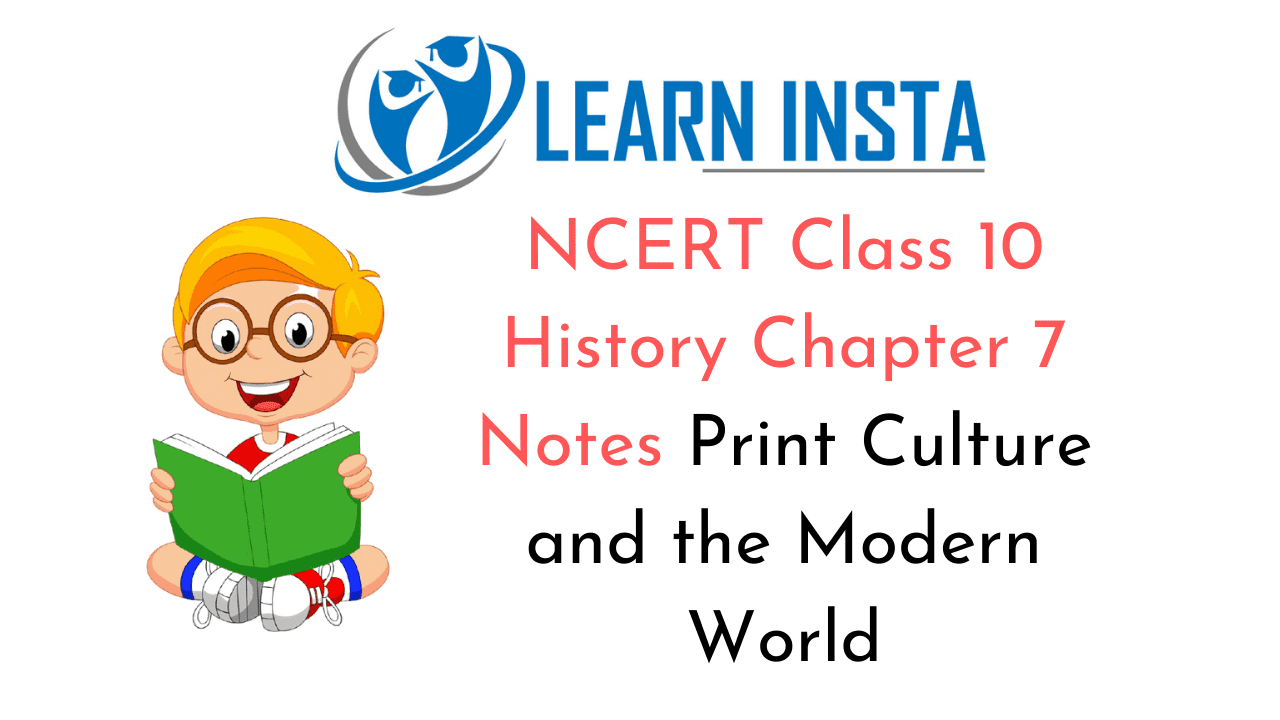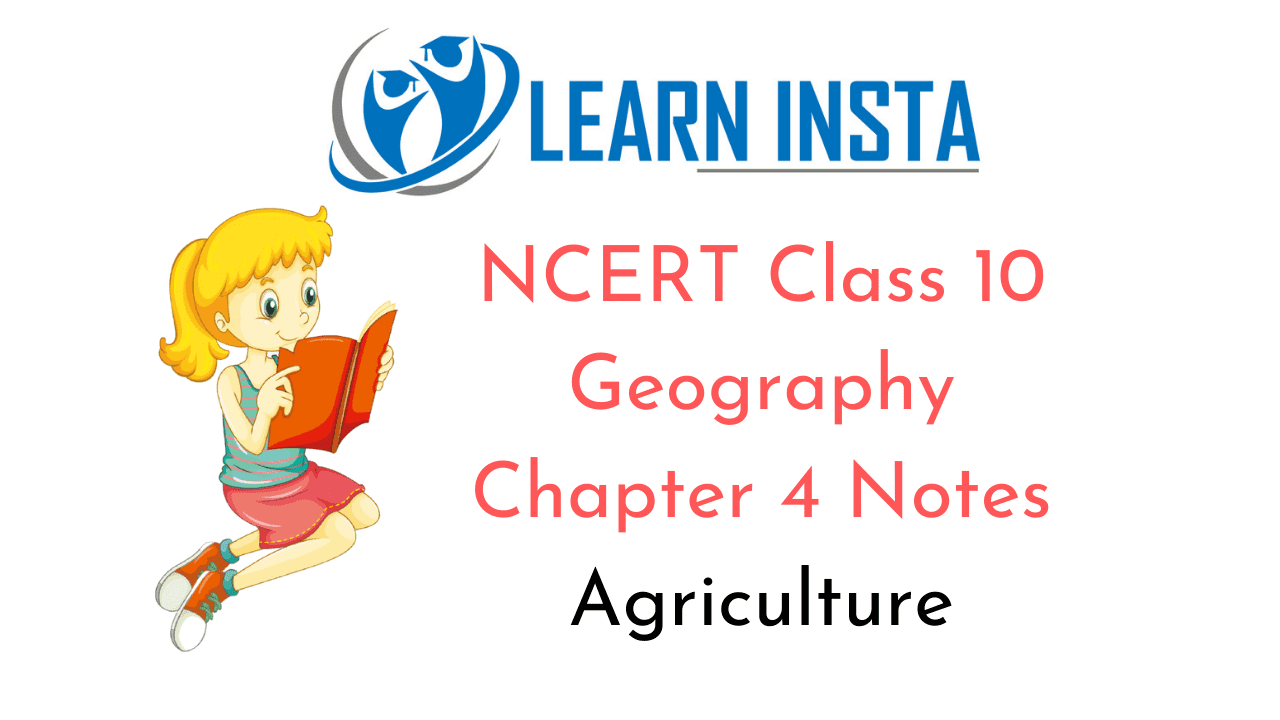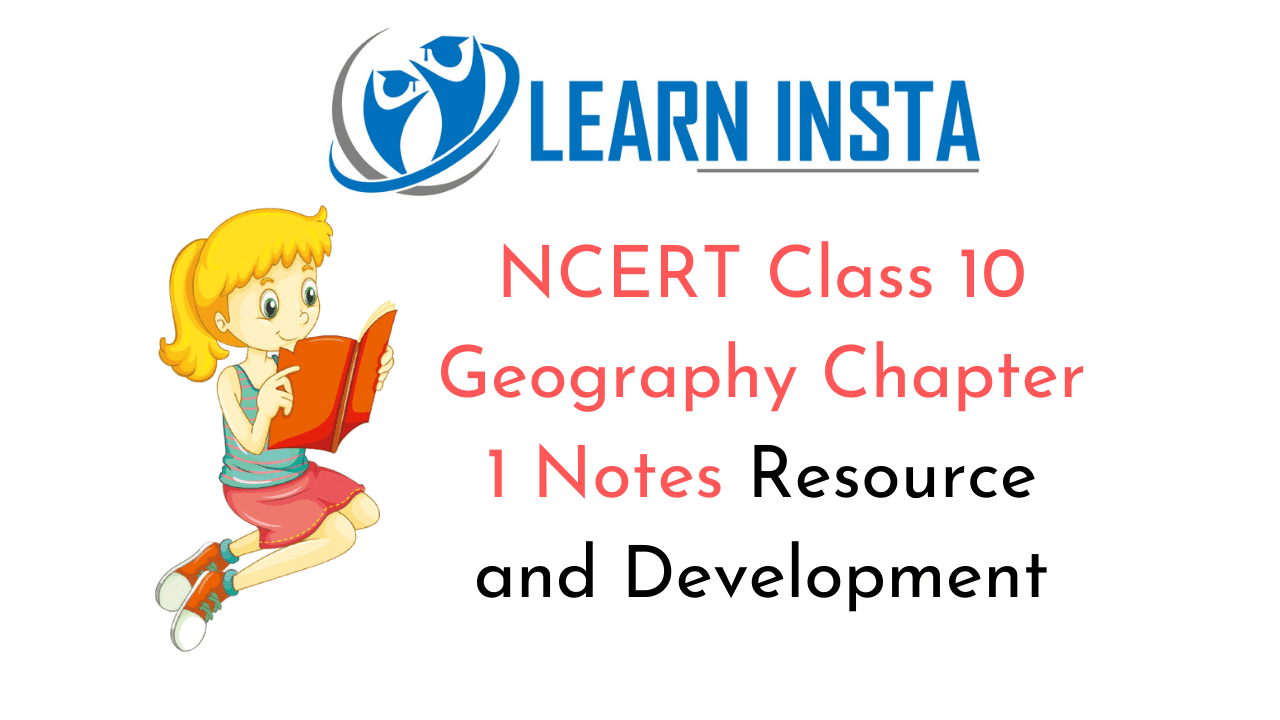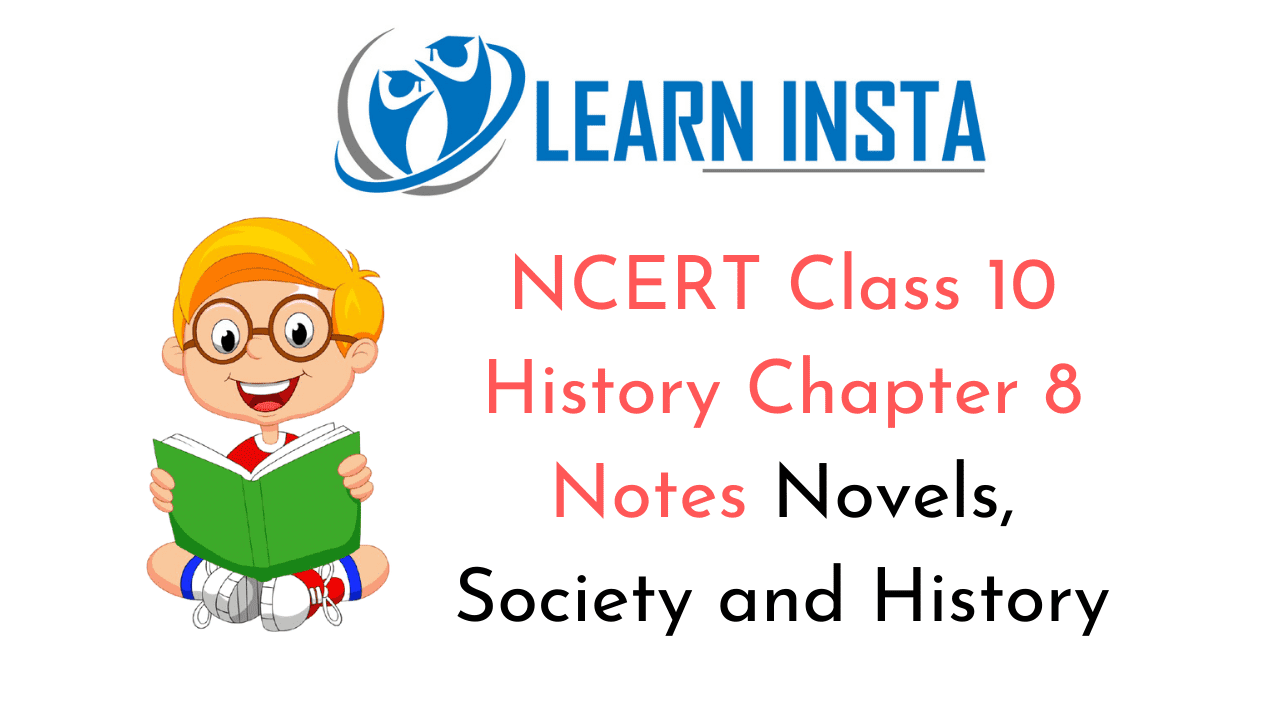
On this page, you will find NCERT Class 10 History Chapter 7 Notes Pdf free download. CBSE Class 10 Social Science Notes History Chapter 7 SST Print Culture and the Modern World will seemingly, help them to revise the important concepts in less time.
Print Culture and the Modern World Class 10 Notes Social Science History Chapter 7
CBSE Class 10 History Chapter 7 Notes Understanding the Lesson
1. The earliest kind of print technology was developed in China, Japan and Korea. This was a system of hand-printing. From AD 594 onwards, books in China were printed by rubbing paper. The imperial state in China was the major producer of printed material. Textbooks for civil service examinations were printed in vast numbers under the sponsorship of the imperial state.
2. The uses of print diversified by the seventeenth century. A new readership emerged that preferred fictional narratives, poetry, autobiographies etc. This new reading culture was accompanied by a new technology. With the establishment of Western powers in China in the nineteenth century, western printing techniques and mechanical presses began to be imported. Shanghai became the centre of the new print culture.
3. In Japan, hand-printing was introduced around AD 768-770 by Buddhist missionaries from China. The Diamond Sutra is the oldest Japanese book printed in AD 868. In medieval Japan, books were cheap and abundant. In the late eighteenth century, libraries and book stores in Japan were packed with hand-printed material on various types such as books on women, etc.
4. Print came to Europe in 1295. The credit goes to Marco Polo who brought the technology of woodblock printing from China to Italy. Soon the demand for books increased in Europe and booksellers all over the continent began exporting books to many different countries. By the early fifteenth century, woodblocks were being widely used in Europe to print textiles, playing cards, etc.
5. The invention of a new print technology was needed for quicker and cheaper reproduction of texts. Gutenberg’s printing press, which came in the 1430s, solved this problem. The first book that Gutenberg printed was the About 180 copies were printed and it took three years to produce them. By the standards of the time this was the fast production.
6. Between 1450 and 1550, printing presses were set in most countries of Europe. As the number of printing presses grew, book production boomed. This resulted in the emergence of a new reading public. Earlier, reading was restricted to the elites. Now books could reach out to wider sections of people.
7. Books could be read-only by the literate, and the rates of literacy in most European countries were very low till the twentieth century. Hence, printers began publishing popular ballads and folk tales, and such books would be profusely illustrated with pictures. These were sung and recited at gatherings in villages and in tavern in towns. Oral culture thus entered print and printed material was orally transmitted.
8. A large section of people, however, did not welcome the printed book. Religious authorities and monarchs, as well as many writers and artists criticized the new printed literature. They had fears if there was no control over what was printed and read then rebellious and irreligious thoughts might spread.
9. But printing of books did not stop. With increase in literacy rates and number of schools in Europe, there was a virtual reading mania. New forms of popular literature appeared in print, targeting new audiences. Booksellers employed pedlars who roamed around villages, carrying little books for sale. Newspapers and journals were also printed which proved to be very informative. The ideas of scientists and philosophers now became more accessible to the common people.
10. By the mid-eighteenth century, there was a common conviction that books could change the world, liberate society from tyranny, and herald a time when reason and intellect would rule. Many historians opine that the French Revolution took place only because of the emergence of print culture.
11. Literacy rates continued to increase in Europe which in turn increased the number of new readers among children, women and workers. A children’s press was set up in France in 1857. This press published new works as well as old fairy tales and folk tales. There were penny magazines for women. The novels of Jane Austen, the Bronte sisters, George Eliot became popular among women in India, the printing press first came to Goa with Portuguese missionaries in the mid-sixteenth century.
12. In the beginning books were printed in different Indian languages such as Konkani and Kanara. The English language press began to grow in India from the eighteenth century. But at that time publication was restricted to officially sanctioned newspapers that could counter the flow of information that damaged the image of the colonial government.
13. By the close of the eighteenth century, a number of newspapers and journals appeared in print. There were Indians, too, who began to publish Indian newspapers, for example, the weekly Bengal Gazette.
14. Indian society in the early nineteenth century suffered from several evils. Many enlightened Indians like Raja Rammohun Roy criticised existing practices and campaigned for reform, while others countered the arguments of reformers. These debates were carried out in public and in print. Printed tracts and newspapers spread the new ideas and shaped the nature of the debate.
15. By the end of the nineteenth century, a new visual culture was taking shape in India. With the setting up of an increasing number of printing presses, visual images could be easily reproduced in multiple copies. Painters like Raja Ravi Varma produced images for mass circulation.
16. Cheap prints and calendars were now easily available in the market. These prints began shaping popular ideas about modernity and tradition, religion and politics, and society and culture. By the 1870s, caricatures and cartoons were being published in journals and newspapers, commenting on social and political issues.
17. Reading among Indian women increased enormously in the middle-class homes. Many journals began carrying writings by women, and explained why women should be educated. But conservative Hindus and Muslims were against women’s education. The rebel women defied these conservative people. In East Bengal, Rashsundari Debi wrote her autobiography Amar Jiban which was published in 1876. Other women writers were Tarabai Shinde and Pandita Ramabai.
18. While Urdu, Tamil, Bengali and Marathi print culture had developed early, Hindi printing began seriously only from the 1870s. In the early twentieth century, journals written for and sometimes edited by women, became very popular. They discussed issues like women’s education and the national movement.
19. From the late nineteenth century, issues of caste discrimination began to be written about in many printed tracts and essays. Jyotiba Phule wrote about the injustices of the caste system in his Dr. B.R. Ambedkar and E.V. Ramaswamy Naicker also wrote on caste and their writings were read by people all over India.
20. The colonial government never gave full freedom to the native press. As vernacular newspaper carried nationalist messages, the colonial government passed the Vernacular Press Act in 1878. It provided the government with extensive rights to censor reports and editorials in the vernacular press. Despite repressive measures, nationalist newspapers grew in numbers in all parts of India. They reported on colonial misrule and encouraged nationalist activities.
Print Culture and the Modern World Class 10 CBSE Notes Important Terms
Calligraphy: The art of beautiful and stylized writing, j Autobiography: The story of a person’s life written by that person.
Anthology: A published collection of poems or other pieces of writing,
Vellum: A parchment made from the skin of animals.
Platen: In letterpress printing, platen is a board which is pressed onto the back of the paper to get the impression from the type.
Compositor: The person who composes the text for printing.
Galley: Metal frame in which types are laid and the text composed.
Ballad: A historical account or folk tale in verse, usually sung or recited.
Taverns: Places where people gathered to drink alcohol, to be served food, and to meet friends and exchange news.
Inquisition: A former Roman Catholic court for identifying and punishing heretics.
Heretic: A person who holds an opinion contrary to accepted beliefs or teachings of the Church.
Heretical: Beliefs which do not follow the accepted teachings of the Church.
Satiety: The state of being fulfilled much beyond the point of satisfaction.
Denominations: Subgroups within a religion.
Almanac: An annual publication giving astronomical data, information about the movements of the sun and moon, timing of full tides and eclipses, and much else that was associated with people’s everyday life.
Chapbook: A term used to describe pocket-size books that are sold by travelling pedlars,
Despotism: A system of governance in which absolute power is exercised by an individual, unregulated by legal and constitutional checks.
mama: Legal scholars of Islam and the sharia (a body of Islamic law).
Fatwa: A legal pronouncement on Islamic law usually given by a mufti, a legal scholar, to clarify issues on which the law is uncertain.
Vernacular: The normal, spoken form of a language rather than the formal, literary form.
Notes of History Class 10 Chapter 7 Time Period
768-770AD: Buddhist missionaries from China introduced hand-printing technology into Japan.
868AD: The oldest Japanese book Diamond Sutra was printed.
1430S: Johann Gutenberg developed the first printing press.
1517: Martin Luther, the religious reformer wrote Ninety Five Theses.
1558: To control publishers and booksellers, an index of Prohibited Books was formulated.
1821: Sambad Kaumudi was published by Raja Rammohun Roy.
1878: Vernacular Press Act was passed.
1920s: Popular works were sold in cheap series, called the Shilling series in England.
1928: Begum Rokeya Hossein, a noted educationist criticized men for withholding education from women.


 On this page, you will find NCERT Class 10 Geography Chapter 1 Notes Pdf free download. CBSE
On this page, you will find NCERT Class 10 Geography Chapter 1 Notes Pdf free download. CBSE 
